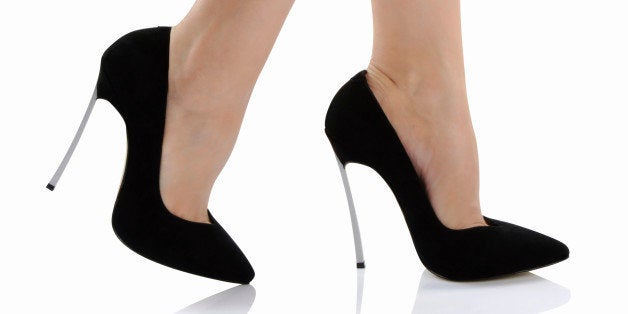
Would you believe me if I told you that, on average, people stand on a 5-degree downslope all day?
That's what modern shoes do to us, and they're affecting our physiology and psychology.
Consider this.
The average American adult stands on a forward slope of about 5-6 degrees, assuming an average heel drop of 12-15 mm and shoe lengths of 273 mm and 228 mm for men and women, respectively. But this is just based on the average training shoe. In fact, footwear for other ages and demographics can present a much steeper slope. Kids' shoes maintain the same heel drops as adults but feature drastically shorter lengths, skewing the incline upward to around 10- or even 20-degree slopes. And then there are high heels, which approach insane inclines, placing feet at as much as 20-40 degree angles. It isn't so much standing as it is falling forward at that point.
Humans never developed a biological need for running shoes nor heel drops. So we have to ask ourselves: What could they be doing to our physiology?
As soon as we plant our feet on a downhill, we rearrange the orientation of our entire body for worse. The subtle, forced plantar flexion of the foot applies new points of stress throughout the lower and upper body, leading to the potential for long-term damage to muscles, tendons and ligaments over time. The entire body is affected by the stance and stability of our feet, much like how a foundation supports a house. If its foundation tilts or loses stability, the structure of the house will be weakened, which could lead to a collapse.
In addition, modern shoes create a cognitive disconnect between us and our environment. The shoe itself removes direct sensory contact between the earth and our feet. The sole of the shoe also distorts the orientation of our feet and our resulting posture, conflicting with our perspective of the world around us. As mentioned, the heel drop creates a forward leaning motion, and the longer we wear the shoes, the more time we spend on a downhill slope, which in turn creates a constant state of stress and anxiety. Again, any subtle disorientation of our physiology can result in a not-so-subtle disorientation of our mental state.
I find the common acceptance of these footwear features troubling for adults. I find it even more troubling that we expose our children to the same issues. Children require an enormous amount of natural sensory feedback during their growth and development. Distorting that feedback with the heel drops of kids' sneakers seems extremely short-sighted. I would never put anything with a significant heel drop on the feet of my children.
These are my contentions, based on a lifetime of experimenting, biohacking and talking with doctors, trainers, physiologists and even business associates. We know that the heel drops of high heels and children's footwear as a whole have negative effects already. There is a lack of extensive scientific research for common adult footwear with moderate heel drops, but that is why I want people to take my logic and try to argue the contrary. Now's as good a time as any to ask:
How does constantly standing on a downhill provide any health benefits?